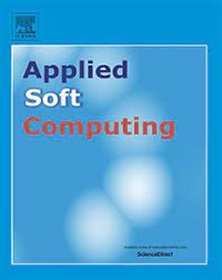A method based on Generative Adversarial Networks for disentangling physical and chemical properties of stars in astronomical spectra
IF 7.2
1区 计算机科学
Q1 COMPUTER SCIENCE, ARTIFICIAL INTELLIGENCE
引用次数: 0
Abstract
This work presents the design of an autoencoder architecture that uses adversarial training in the context of astrophysical spectral analysis. We aim to develop a middle representation of stellar spectra in which the influence of the most prominent physical properties, such as surface temperature and gravity, is effectively removed. This allows the variance within the representation to primarily reflect the effects of the star’s chemical composition on the spectrum. We apply a scheme of deep learning to unravel in the latent space the desired parameters of the rest of the information contained in the data. This work proposes a version of adversarial training that uses one discriminator per parameter to be disentangled, avoiding the exponential combination that occurs when using a single discriminator. Synthetic astronomical data from the APOGEE and Gaia surveys were used to test the method’s effectiveness. Our approach demonstrates a marked improvement in disentangling, reflected in an improvement in the score of up to 0.7. Additionally, we introduce an ad-hoc framework, GANDALF, designed to facilitate visualization and adaptation of the methodology to other domains in astronomical spectroscopy.
求助全文
约1分钟内获得全文
求助全文
来源期刊

Applied Soft Computing
工程技术-计算机:跨学科应用
CiteScore
15.80
自引率
6.90%
发文量
874
审稿时长
10.9 months
期刊介绍:
Applied Soft Computing is an international journal promoting an integrated view of soft computing to solve real life problems.The focus is to publish the highest quality research in application and convergence of the areas of Fuzzy Logic, Neural Networks, Evolutionary Computing, Rough Sets and other similar techniques to address real world complexities.
Applied Soft Computing is a rolling publication: articles are published as soon as the editor-in-chief has accepted them. Therefore, the web site will continuously be updated with new articles and the publication time will be short.
 求助内容:
求助内容: 应助结果提醒方式:
应助结果提醒方式:


